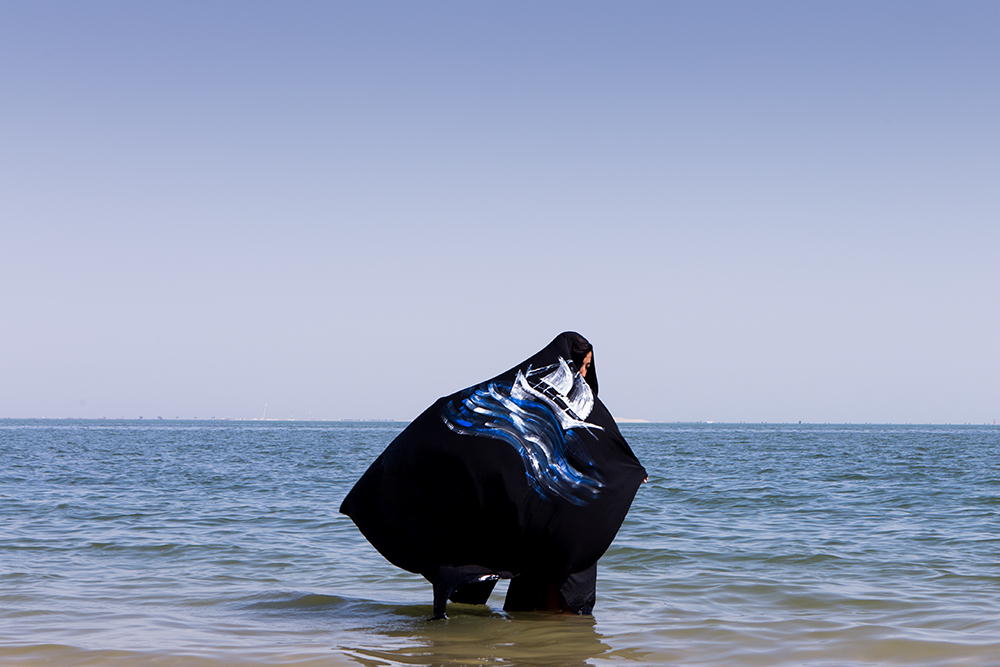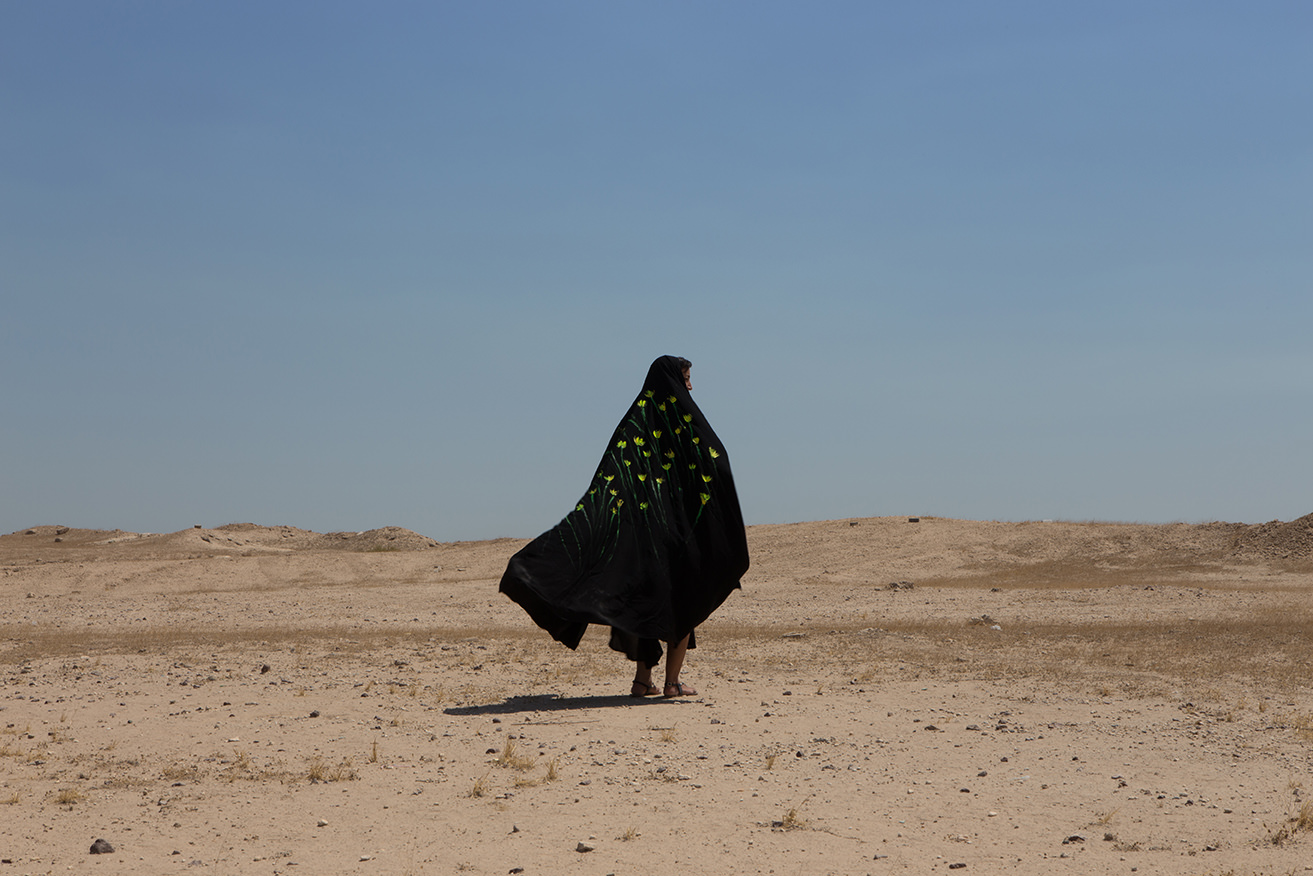
An Interview with photographer Farah Salem
Q: How did this photo performance project come about?
At the time I was still living in Kuwait and I encountered a number of people who’s experiences intersected with mine. However, it felt like there was not enough space for us to share these specific perspectives. As women, we wanted a safe and private container, and often we realized the only container we had was our own bodies. Yet our bodies have already carried so much. I recognize that not everyone has the privilege to publicly express their stories and came to realize that these encounters took place naturally and felt emotionally safe to exchange and share our experiences privately.
The ‘abaya served as a metaphor for sacred privacy, it almost held a space for us to exchange our stories that no other object/setting could facilitate. Especially due to its cultural/societal symbolism, creating dual realities which challenge the public and private space/representation of one’s body.
Q: How has this project evolved for you over the past 4 years?
I started the project with participants I met in Kuwait, and left it behind for a while, but came to revisit it when I realized that I was continuing to meet people in my travels whose narratives intersected with mine and former participants. I decided to continue working on it and allow it to be based on natural encounters and disclosures of narratives.

Q: The ‘abaya is a key aspect of each image, what was the selection process like for each garment?
The traditional Kuwaiti ‘abaya is black, and in this series, all-black garments include symbols reflected within Kuwait’s history, ritual, landscape, and cultural values. While the single white ‘abaya stands out on its own, with a painting of a blooming field, a site so rare within Kuwait’s natural and cultural landscape. These symbols and garments are especially relevant in history, rituals, values, and landscapes to women’s bodies.
Q: What do you want people to take away from your upcoming exhibition?
To encounter a different face of the ‘abaya.


